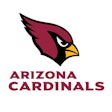Copyright 2018 The Palm Beach Newspapers, Inc.
All Rights Reserved
Palm Beach Post (Florida)
Florida Atlantic University reported false numbers to the government, exaggerating how many women played for its sports teams, just a year after it ranked among the worst in the country for female representation in sports.
In 2016, women represented more than half of the Boca Raton school's enrollment but only 31 percent of its athletes. The percentage was the lowest of all 127 schools participating in the highest level of college sports.
Just one year later, FAU claimed it had erased its female participation gap. It told the U.S. Department of Education in 2017 that 51 percent of its athletes were women.
But the 20 percentage-point increase was based on an inflated number, The Palm Beach Post has found. To arrive at the higher percentage, FAU counted dozens of female athletes who did not exist.
FAU reported it had more than doubled the number of athletes on its women's track team from the previous year, but the team's own website shows that was far from the case. The staggering numbers: FAU reported having 98 women's track athletes. The roster showed no more than 43, and the team photo showed 38.
The 98 women, FAU claimed, occupied 222 roster spots on its cross-country, indoor track and outdoor track teams, more than any women's track program among the 127 major sports schools. The number boosted a key measure used to determine whether schools are complying with sex-based discrimination laws.
Two weeks after The Palm Beach Post asked FAU about the discrepancy, athletic department spokeswoman Katrina McCormack acknowledged in an email that the reported number was incorrect.
"We recognize the error, are reviewing the report in its entirety and are working with the (National Collegiate Athletic Association and Department of Education) to ensure the proper corrections," she wrote.
The employee who prepared and submitted the report is no longer with the school, McCormack said. The report, however, cites Brian Battle as the "reporting official." Battle remains employed at FAU as senior associate athletic director for internal operations. He was promoted to the job about two months before the report was due and served a six-week stint as interim athletic director shortly after the report's submission.
Lisa Metcalf, a spokeswoman for FAU, said another staff member filed the report on Battle's behalf and he was unaware of any errors at the time.
"We believe the cause was simply a clerical error," Metcalf said. "FAU takes its responsibility to provide equitable athletic participation opportunities extremely seriously."
'That is a violation'
The reported number also exposed a Catch-22 that involves another measure of whether a school is following the law in how it treats female athletes: scholarship dollars.
FAU boosted the number of female athletes but did nothing to boost the amount of scholarship money awarded to its female athletes, leaving a gap that violates the federal law known as Title IX, an attorney who reviewed FAU's numbers said. The reported gap between FAU's percentage of female athletes and percentage of athletic scholarship dollars for women was the widest of all the major sports schools in the country.
"That is a violation, pure and simple," said Neena Chaudhry, an associate general counsel for the National Women's Law Center.
Metcalf pointed out FAU's female athletes historically have gotten more than their fair share of scholarship money. Until the erroneous statistic skewed the numbers last year, FAU reported giving women a higher percentage of athletic scholarship dollars than the percentage of athletes they represented.
But even after subtracting the 55 women unaccounted for on FAU's report, the school's numbers indicate it disproportionately gave athletic scholarship dollars to men last year, violating federal law.
Correcting for the exaggerated track team numbers, no more than 46 percent of FAU athletes in 2017 were women, The Post calculated, but only 36 cents of every scholarship dollar went to female athletes.
In a news release issued Friday after The Post's story went online, FAU repeated its position that the female participation error was clerical.
Without providing details, FAU said it would issue revised numbers to Education Department officials claiming that the correct percentage of female athletes is 43 and that the school actually handed out 45 percent of its sports scholarship dollars to women, not 36 percent. It did not explain how it had gotten the scholarship number wrong.
'45 years to get it right'
Title IX, the law prohibiting sex-based discrimination in schools, has paved the way for hundreds of thousands of women who otherwise would not have had the opportunity to participate in college sports.
Before Congress enacted the law in 1972, fewer than 32,000 women played college sports, and athletic scholarships for women were nonexistent. Today more than 230,000 women compete and receive an average of $7,500 each in athletic scholarships.
But schools across the country still routinely fall short of meeting two of Title IX's most critical requirements: providing women equal opportunities to participate in sports and making sure they get their fair share of athletic scholarship dollars.
There's no doubt complying with Title IX requires a concerted effort from schools, which must ensure its percentage of athletic scholarship dollars for women are proportional to the percentage of women who are athletes. A school also must show it is providing equal opportunities for men and women to play sports, or at least that the school has a history of expanding opportunities for women, or that there is not unmet demand for women's sports on campus.
Compliance with the law also may mean less revenue for athletic departments that could make more money investing in football and men's basketball, the two profitable men's sports, instead of women's teams.
But Title IX's purpose is to give women equal opportunities, something many schools still don't provide because the law is not strongly enforced, Chaudhry said.
Both the Department of Education and the NCAA annually collect data from schools that help indicate whether they meet Title IX requirements, but those organizations don't always use it. Sometimes, the department uses data to initiate a compliance review of a school, but mostly its enforcement efforts stem from individual complaints, of which it receives thousands per year. Title IX compliance is not one of the NCAA's prerequisites for competition.
"Schools have had 45 years to get it right and to make sure they're treating their female students equally, and too many are still out of compliance," Chaudhry said. "The reality is we're seeing huge gaps at so many schools that I think many schools have just not been doing their job."
What distinguishes FAU is not only its inaccurate numbers and low ranking relative to other schools, but that its gender gaps have widened as its football program rose to prominence. While schools overall made gradual progress toward equal treatment of women athletes in recent years, the disparities at FAU got worse.
The football effect
College athletic departments long have sought to grow their budgets by investing in football because more revenue from football generally leads to more money for the athletic department.
Whereas most college sports lose money, football is one of the few that operates in the black.
In 2017, the 126 football teams (down one from the year before) that competed in the NCAA's top level of competition, the Football Bowl Subdivision, or FBS, profited more than $1.7 billion, Education Department reports show. Men's basketball teams made $300 million. All other teams combined lost more than $1 billion.
For all its lucre, however, college football is still divided into haves and have-nots. Seventy-five FBS teams took all the profits, while the other 51 programs either broke even or lost money, Education Department reports show.
When small-time athletic departments attempt to grow their football programs, they often leave women's sports behind, intentionally or not. On average, the FBS schools whose football programs broke even or lost money last year had the widest gender gaps in the two main Title IX categories -- athletic scholarship dollars and female participation.
Under Title IX, a school's percentage of female students should be roughly proportional to the percentage of playing opportunities, or roster spots, it offers to women. It also requires schools to have no more than a 1 percentage-point gap between the percentage of athletes who are women and the percentage of scholarship dollars awarded to women athletes.
Nationwide, schools with football teams fared significantly worse than schools without them at meeting those two Title IX requirements, The Post found. One reason, Chaudhry said, is football teams typically have rosters of more than 100 men, most of whom receive full or partial scholarships. Moreover, pouring money into the main revenue-driving sports draws the attention away from women's and other men's teams, she said.
"You've got schools choosing to devote the vast majority of their resources toward football and men's basketball, so that has consequences," Chaudhry said. "The thing is, that does not exempt schools from Title IX."
Equality suffers
FAU fits squarely into these trends. Its football program is fairly new and makes pennies on the dollar relative to competitors. The University of Florida, for example, profited $49 million last year, and Florida State University made $38 million, Education Department reports show. FAU broke even.
It took almost a decade for the FAU football team to stop losing money, Education Department reports show, and since then, athletic department revenue has ballooned. In 2003, the athletic department brought in less than $10 million, and the football program less than $600,000. Last year, the department raked in $26 million, almost a third of which came from football.
FAU football reached new heights in 2017. Led by celebrity head coach Lane Kiffin, whose $950,000 base salary is more than FAU President John Kelly's total compensation, the Owls won 11 of 14 games, up from three the year before. FAU played in and won the Boca Raton Bowl for the first time in its new $70 million stadium, which opened in 2011.
The Owls' gains on the gridiron, however, came at the expense of equal treatment for women. In 2004, three years into the football team's existence, 41 percent of the school's athletes were women, and they received 51 percent of athletic scholarship dollars.
Those figures have fallen sharply since. In 2016, women represented just 31 percent of FAU athletes and received 36 percent of athletic scholarship dollars.
And despite the football team's success, it still brings in less money than almost 90 percent of FBS teams.
FAU disputes that its emphasis on football has reduced its commitment to women, pointing out that the school has added women's track and beach volleyball since it fielded its first men's football team in 2001.
"FAU's football team has not suppressed the growth of women's athletic opportunities at FAU in any way," said Metcalf, the FAU spokeswoman.
The scholarship divide
In 2017, after reporting the lowest percentage of women athletes in the country among FBS schools a year earlier, FAU submitted an incorrect but far more favorable count of women athletes.
Education Department policy allows it to "limit, suspend, terminate or fine an institution that provides inaccurate information," a spokesman said.
The reported number indicated FAU had the biggest difference in the FBS between its percentage of female athletes and the percentage of scholarship dollars it awarded to them. But after subtracting the missing track athletes, FAU would still violate the 1 percentage-point rule with a 10 percentage-point gap between its female athletes and athletic scholarship dollars.
Meagan Giddens, a mid-distance freshman runner for FAU last year who has since transferred, said neither she nor some of FAU's top runners received any athletic scholarship money last year to cover the rising costs of tuition.
"It's definitely saddening," Giddens said. "Our top runner, who represented our team, wasn't even getting full scholarship; she was getting books and that was it."
Complaints from athletes are unlikely, she said, because it "could hurt their careers."
"They could get in a lot of trouble for speaking out, unfortunately," Giddens said.
Cassie Pough, who played tennis for FAU as a junior in 2016, said she was fortunate to get a full-ride scholarship but knew athletes who had to work second jobs to pay their tuition.
"They were struggling," Pough said. "They were doing everything we're doing. They were showing up to the workouts, showing up to the morning practices, but they got nothing out of it."
Pough said although Title IX is great for women of all sports, she sympathized with some men whom she feels are shortchanged. Whereas schools tend to distribute scholarship money evenly among women's teams, the majority of scholarships on the men's side go to football and basketball players.
For example, while women's tennis players at FAU shared the equivalent of eight full-rides, men's tennis players shared fewer than three. Women's soccer players split the equivalent of about 16 full-rides, but men's soccer players split just four.
Meanwhile, football players shared 82 full-rides, and men's basketball players shared another 12.
"As women, we definitely get a lot more because of Title IX, so we're very thankful," Pough said. "For the guys, if you're not playing basketball or football, it sucks."
Consequences rare
FAU is far from alone in falling short of meeting gender equity laws for athletes. The Post's analysis found women nationwide make up 54 percent of enrolled college students but only 41 percent of athletes. Female athletes receive 46 percent of scholarship dollars and 43 percent of participation opportunities.
Unlike scholarship dollars, there is no set number determining whether a school's female participation rate is complying with Title IX. Instead there is a three-part test, and a school must pass just one part of the test to be in compliance.
The three parts are: the percentages of roster spots for men and women are about the same as the percentages of enrolled male and female students, the school has a history and continuing practice of expanding athletic opportunities for women and the school is meeting demand of female athletes who are able and want to play.
The National Women's Law Center says a gap of more than 10 percentage points between a school's percentages of female students and female athletes should raise "red flags" the school is out of compliance.
At FAU, the gap was 24 percentage points in 2016. But Metcalf said the school complies with Title IX by passing the second part of the test, demonstrating a history of expanding opportunities for women athletes.
Since 1979, seven years after Congress enacted Title IX, FAU has added women's golf, tennis, cross-country, basketball, swimming and diving, volleyball, soccer, softball, outdoor track, indoor track and beach volleyball, Metcalf said. In other words, all the women's sports it has today.
"We are currently studying whether to continue that trajectory (using the second part of the test) or pursue a different compliance option for future years," she said.
Whether a school is complying with the law is one question; whether it will be held accountable for failing to do so is another.
Most of the Department of Education's enforcement efforts stem from individual complaints. If it finds a school is in violation of Title IX, it works with the institution to reach a resolution agreement, which outlines concrete steps for it to return to compliance. If the department can't reach an agreement with the school, it can refer the matter to the Department of Justice or cut off the school's federal money.
When asked, the department did not cite a single instance in which it cut off a school's money .
Chaudhry, the National Women's Law Center counsel, said women's rights advocates for years have been asking the Department of Education to take more enforcement action on its own. The NCAA, she said, has a "leadership role" to play, too, and could require schools to show improvement or have a plan in place.
"That would go a long way," she said, "toward sending a message that schools need to get their houses in order."
Rough count
After The Post discovered an error, Florida Atlantic University conceded that it had miscounted female athletes in its 2017 report to federal officials. FAU's original numbers for the women's track team:
FAU reported: 98 athletes
Team rosters showed: 43 athletes
Read More of Today's AB Headlines
Subscribe to Our Daily E-Newsletter
Terms and Conditions Privacy Policy































